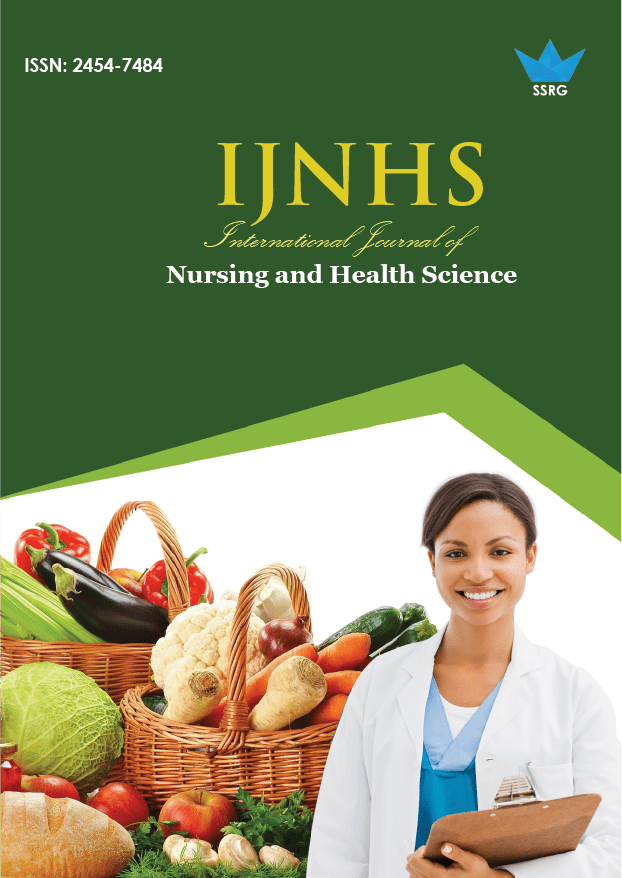Hypnotherapy as an Alternative to Reducing Anxiety Levels, Cortisol Levels and Fetal Heart Rate Among Primigravide in the Third Trimester of Pregnancy

| International Journal of Nursing and Health Science |
| © 2018 by SSRG - IJNHS Journal |
| Volume 4 Issue 3 |
| Year of Publication : 2018 |
| Authors : Ayi Tansah Rohaeti, Ari Suwondo, Rr.Sri Endang Pujiastuti, Leny Latifah, Melyana Nurul Widyawati |
How to Cite?
Ayi Tansah Rohaeti, Ari Suwondo, Rr.Sri Endang Pujiastuti, Leny Latifah, Melyana Nurul Widyawati, "Hypnotherapy as an Alternative to Reducing Anxiety Levels, Cortisol Levels and Fetal Heart Rate Among Primigravide in the Third Trimester of Pregnancy," SSRG International Journal of Nursing and Health Science, vol. 4, no. 3, pp. 5-7, 2018. Crossref, https://doi.org/10.14445/24547484/IJNHS-V4I3P102
Abstract:
During pregnancy, pregnant women may experience anxiety, thoughtfulness, and fear resulting in increased cortisol hormone of 2-4 times a fold, and it will have an impact on the fetus in the form of unstable fetal heart rate. One way to handle it is to use hypnotherapy. This study is to analyzes the differences in the anxiety level, cortisol level, and fetal heart rate among primigravidae in the third trimester of pregnancy after hypnotherapy with a quasi-experimental study. The instrument to assess anxiety was the ZSAS questionnaire, and cortisol examination was performed with ELISA method, fetal heart rate was measured using Doppler. From data analysis in 40 women, this study obtained that There were significant differences in the anxiety level, the level of cortisol hormone, and fetal heart rate among primigravidae in the third trimester of pregnancy after being given hypnotherapy for 1 month.
Keywords:
Hypnotherapy, Anxiety, Cortisol, Fetal Heart Rate.
References:
[1] Zamriati, W. O., Hutagaol, E., & Wowiling, F., Faktor-faktor yang Berhubungan dengan Kecemasan Ibu Hamil menjelang Persalinan di Poli KIA Puskesmas Tuminting, Jurnal Keperawatan, 1(1) (2013) 3.
[2] Cottrell, E. C., Prenatal stress, glucocorticoids, and the programming of adult disease. Frontiers in Behavioral Neuroscience, 3(September), (2009) 1–9. http://doi.org/10.3389/neuro.08.019.2009
[3] Fazio, E., Medica, P., & Ferlazzo, A., Seasonal patterns of circulating Î2-endorphin, adrenocorticotropic hormone, and cortisol levels in pregnant and barren mares, Bulgarian Journal of Veterinary Medicine, 12(2) (2009) 125–135.
[4] Werner, A., Uldbjerg, N., Zachariae, R., Rosen, G., & Nohr, E. A., Self-hypnosis for coping with labor pain: A randomized controlled trial. BJOG: An International Journal of Obstetrics and Gynaecology, 120(3) (2013) 346–353. http://doi.org/10.1111/1471-0528.12087
[5] Aprilia Y,. Hipnostetri Rileks , aman dan nyaman saat hamil dan melahirkan: gagas medika, Jakarta, (2010) 35-47.
[6] Beevi, Z., Low, W. Y., & Hassan, J., The Effectiveness of Hypnosis Intervention for Labor, An Experimental Study, American Journal of Clinical Hypnosis, 60(2) (2017) 172–191. http://doi.org/10.1080/00029157.2017.1280659
[7] Marzieh Akbarzade, MSc; Bahare Rafiee, MSc; Nasrin Asadi, MD; Najaf Zare4, P., The Effect of Maternal Relaxation Training on Reactivity of Non-Stress Test, Basal Fetal Heart Rate, and Number of Fetal Heart Accelerations : 3(1) (2015) 51–59.
[8] Junjie Chen, and Longfei Yan., Oxygen Consumption and Energy Expenditure in Physical Education Teachers, International Journal of Recent Engineering Science (IJRES), 4(1) (2017).

 10.14445/24547484/IJNHS-V4I3P102
10.14445/24547484/IJNHS-V4I3P102